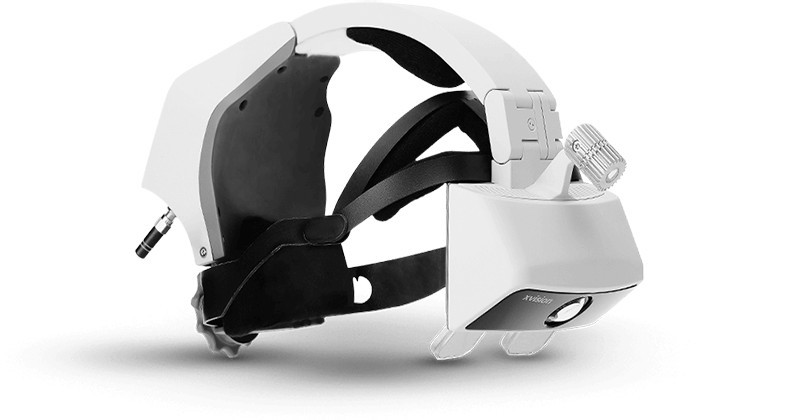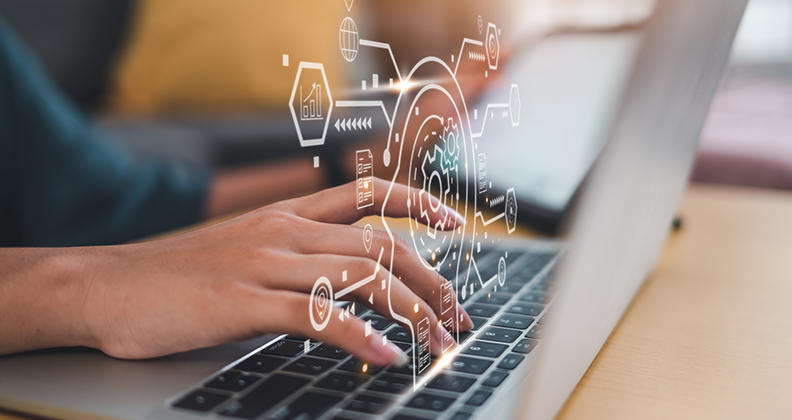
The Innovation Institute at Hospital for Special Surgery (HSS) and VR Electronics have partnered to revolutionize the use of wearable technology in orthopedic and healthcare applications.
The collaboration centers on the latter company’s Teslasuit, which integrates biometry, motion capture, haptic feedback, virtual and augmented reality and temperature control for a comprehensive smart bodysuit with immense potential for personalized diagnostics, training and physical rehabilitation in the musculoskeletal space.
Dream Teams
Howard Hillstrom, Ph.D., Senior Director of the Leon Root, MD, Motion Analysis Laboratory at HSS Innovation Institute, and Jordan Harmon, Chief Commercial Officer and Vice President, Innovation, HSS Innovation Institute, are two key stakeholders leading HSS teams alongside Teslasuit’s teams to bring these ideas to life.
HSS brings extensive knowledge, training and experience in the clinical and scientific aspects of human movement to the partnership. With more than 30 years of motion analysis under his belt, Dr. Hillstrom leads a lab team made up of engineers and scientists ranging from recent Ph.D.s to mid-career professionals with expertise in modeling, quantitative measurements of human movements and analysis of data. The Leon Root, MD, Motion Analysis Laboratory focuses on both research in an academic setting and clinical assessment in a hospital setting, and is one of only 12 credentialed motion analysis labs in the United States. They see both children and adults with the full spectrum of musculoskeletal disease.
“Many of our surgeons and physicians see not only the world’s top athletes, but they also have a chance to see all kinds of different injuries from the sports medicine, joint replacement, physical therapy and rehab worlds,” Harmon said. “Because of that expertise, you get a lot of input. We have 35,000 surgeries per year and see half a million musculoskeletal patients each year, so you get to see different, complex problems, giving us a lens to look at these really difficult things to solve for.”
While several companies are looking to capitalize on wearable technology, the Teslasuit team stood out to HSS.
“This was the first company that we’ve started to have conversations with that respected the medical field in the way that I think it needs to be respected,” Harmon said. “They have a healthy appetite for the technical research and the technical capabilities that need to be part of the team, and they have a very strong team. They have an actual doctor on staff, who is looking at this from a medical perspective.”
The mutual regard toward intense technical and medical research means that the Teslasuit team could work seamlessly with Dr. Hillstrom’s team at HSS, brainstorming applications in orthopedic and other medical fields.
“The more we heard about the way they developed their technology and their applications to date, the more excited we got because we realized it has medical application, even though that wasn’t their original intent for designing it,” Dr. Hillstrom said. “We got to know their team, and they’re a group of excellent scientists and programmers, and our team here is another group of excellent engineers and scientists and biomechanists. When you put it all together, you get a lot of great synergy. It became clear that this would be a great project to work on together.”
A Lab in a Suit
The Teslasuit itself has a number of capabilities, including motion analysis, haptic feedback and biometric capture. The haptics simulate sensations and the sense of touch for users in a virtual or augmented reality setting. Biometric data is gathered in real-time, which can provide physicians with the patient’s emotional state, stress level and key health indicators.
“We’re very excited because I think ultimately, there are a ton of medical applications in the rehab space, where you could actually see this being used not just for motion capture, but also providing that feedback,” Harmon said.
Dr. Hillstrom describes the technology as a full-scale laboratory in a mobile, wearable suit.
“Our laboratory makes all kinds of detailed measurements about human movement, and that includes three-dimensional movement, joint angles, the torques at your joints, and detailed measurements of why you’re walking within normal limits (or not),” he said. “Teslasuit’s approach, in collaboration with HSS, is to move these measurements into a setting that can be out of the laboratory.”
This means that by having the motion capture measurements inside of the suit, it allows physicians, therapists and researchers to study kinematics such as joint angles, velocities and accelerations in real-life settings during everyday activity.
“In addition, there is feedback from the suit that stimulates muscles and it feels a bit like a push or a pull, and that feedback allows the wearer the sensation of what is going on in their environment,” Dr. Hillstrom said. “You can also acquire electromyographic activity — the electrical manifestation of contracting muscles — so you can study how muscles are contracting and whether they’re firing in the right sequences as you’re moving.”
This type of information can be used in a variety of ways for medical diagnostics, treatment planning, prognosticating and modeling.

VR Electronics Teslasuit was described as a full-scale laboratory in a mobile, wearable suit by Howard Hillstrom, Ph.D., of HSS Innovation Institute.
VR Beyond Gaming
Virtual reality (VR) is no stranger to medical applications, though to date, it’s typically used for O.R. simulations and training. The Teslasuit, however, takes this perhaps a step (or more) further.
“Patients who wear it can go through a particular training protocol and feel like they’re actually with a therapist or clinician, and that’s a completely unique experience,” Harmon said. “That’s a possible future endeavor, where you can actually provide a complete remote session via virtual reality and have haptic feedback.”
Dr. Hillstrom likens the technology to the movie Avatar, where virtual reality can be used in the rehabilitation of patients who may have lost a limb. There are laboratories in medical centers around the U.S. and also affiliated with the military that have been training and using virtual reality for amputation rehab.
“The mental health aspects of losing a limb are horrendous, and sometimes get in the way of individuals being able to even do their rehab, and it’s a long road ahead when they put their hands on the parallel bars for the first time and they have to learn to walk with a prosthesis that they can’t directly control,” Dr. Hillstrom said. “But when they’re wearing a virtual reality headset and they see their limbs, they put a smile on their face and they just get up and walk right down the pathway, all the way down the parallel bars because it’s a change in mental outlook. So there are a lot of exciting things in the future that are going to use virtual reality and augmented reality in medicine.”
The Value of Data
Consider a patient who has an injury that has forced her to overcompensate by moving incorrectly for a long period of time. Physical therapy often aims to retrain the muscles and joints to fire the appropriate way through properly executed exercises and movements. Retraining the body is very important for recovery, and the data that the Teslasuit provides can help determine whether the movements and exercises are being done correctly.
“Neuromuscular rehabilitation, retraining of gait, retraining of purposeful movements is a very exciting area, which is the subject of contemporary research right now,” Dr. Hillstrom said. “What’s interesting about this technology is you can get that feedback while you’re on the soccer field, or while you’re outside walking in Central Park. That’s unique; it’s a difficult thing to recreate in a lab.”
Dr. Hillstrom and Harmon see this as the future of the technology. Similar to how a Holter monitor can track a heartbeat while at home, the Teslasuit may be used to capture movement where people live, work and play. Using that data can give providers a better idea of what the treatment path should be.
“It’s very hard to duplicate sports settings in a laboratory, like the cleated shoe to the sports turf interface,” Dr. Hillstrom said. “It can be done, but it’s not natural. It’s nothing like running on the field and cutting 45 degrees at high speed to avoid a defender, so the idea of being able to get those kinds of quantitative measurements in a real-life scenario is exciting.”
Traditionally, there is a gap in knowledge between physical therapy or doctor appointments in which there is no method to provide real-time education to patients or monitor progress. The Teslasuit may be the answer to a continuous feedback loop between patient and provider during recovery.
“We have started to have conversations with very large communication providers that could embed a chip into the suit that may allow it to have 5G technology, for example,” Harmon said. “That’s something that’s particularly interesting to us as well, because now you’re not tethered to any physical location.”
Collaboration Timeline
Right now, the technology is being tested in laboratory settings to evaluate accuracy, reliability and medical use viability.
“First and foremost, we are testing the technology from a medical perspective,” Harmon said. “Then, we’ll move into improving it for medical-grade purposes, working with our physical therapy teams to develop medical protocols with Teslasuit.”
As it begins to take shape in the medical arena in the U.S., the teams will prepare for FDA clearance and broader medical applications. That includes developing the product itself, changing the product from a full, complete wearable suit into sleeves that are specific to a particular body part, and making it very thin for a comfortable fit on the body similar to a snug lightweight shirt.
By the end of 2021, HSS expects to move to phase two, which is building out medical use cases. A medical version of the product will likely launch in mid-2022, with the hope for FDA clearance and defined applications.
Ultimately, HSS and Teslasuit hope to combine efforts to develop even newer generations of wearable, breathable technology that’s easy for individuals to put on and take off, take measurements, and provide data that can inform treatment decisions.
“The reality with AI and machine learning is that you need a lot of data to be able to make statements and be able to do predictions, especially in the medical space,” Harmon said. “So part of the relationship here is making sure that we not only capture the data, but make sure it becomes useful. If you have 1,000 data points, physical therapists and doctors won’t know exactly what to do with them unless you make sure to put them in context.”
The goal is to put data into context that can be used in treatment. That comes in the form of prediction and modeling, and providing visibility into notoriously difficult medical cases such as total joint replacements or cerebral palsy.
“When you need information about an individual from head to toe, and you’d like to know how the muscles are behaving at the same time as they’re moving and you want quantitative information about that, and you might need to provide feedback to the individual — that’s when you’re going to need a Teslasuit, because there’s nothing else that does that,” Dr. Hillstrom said.
HT
Heather Tunstall is a BONEZONE Contributor.




